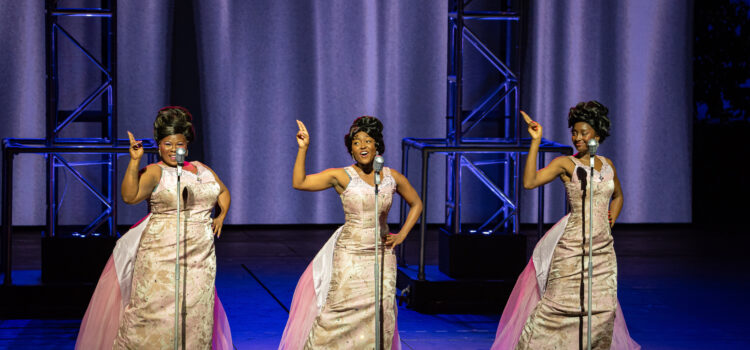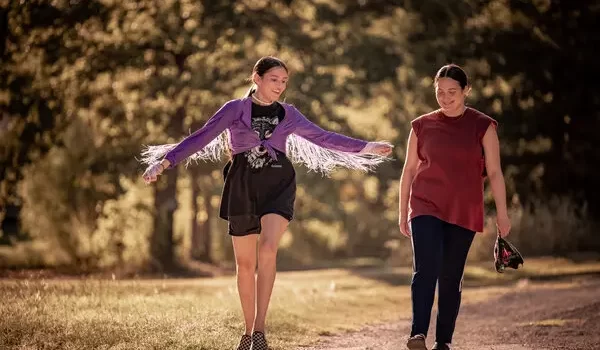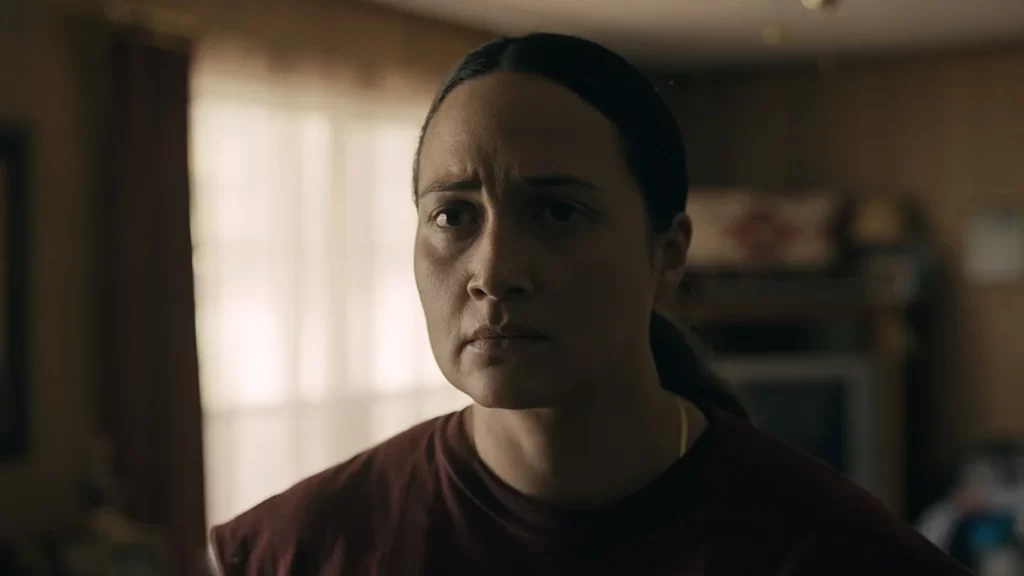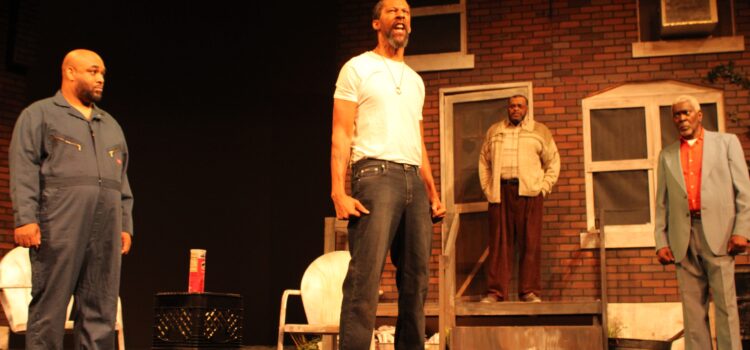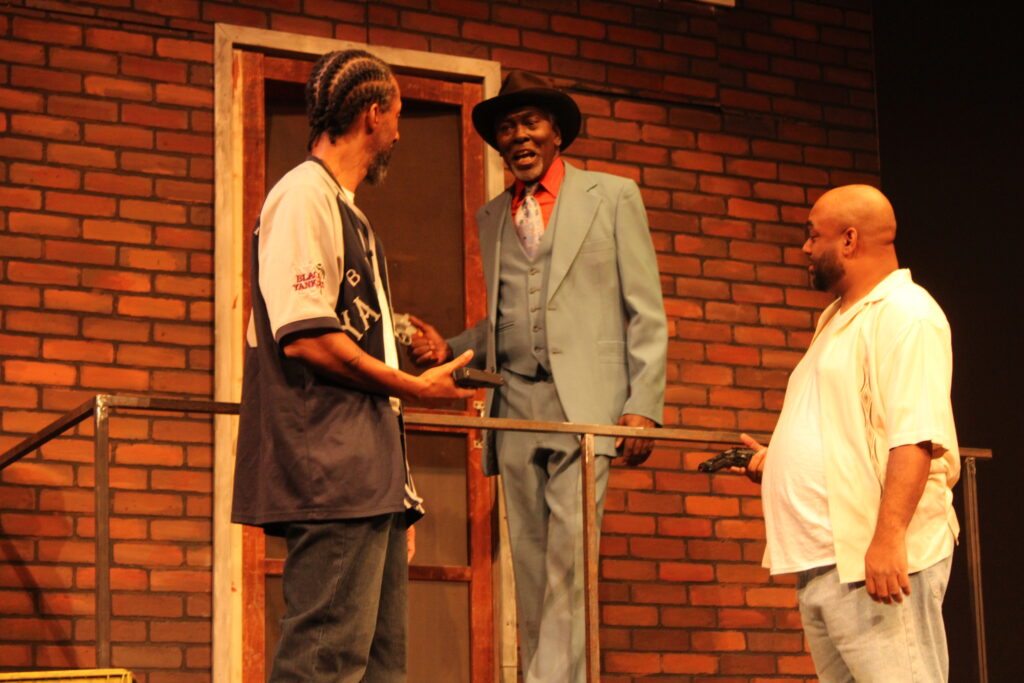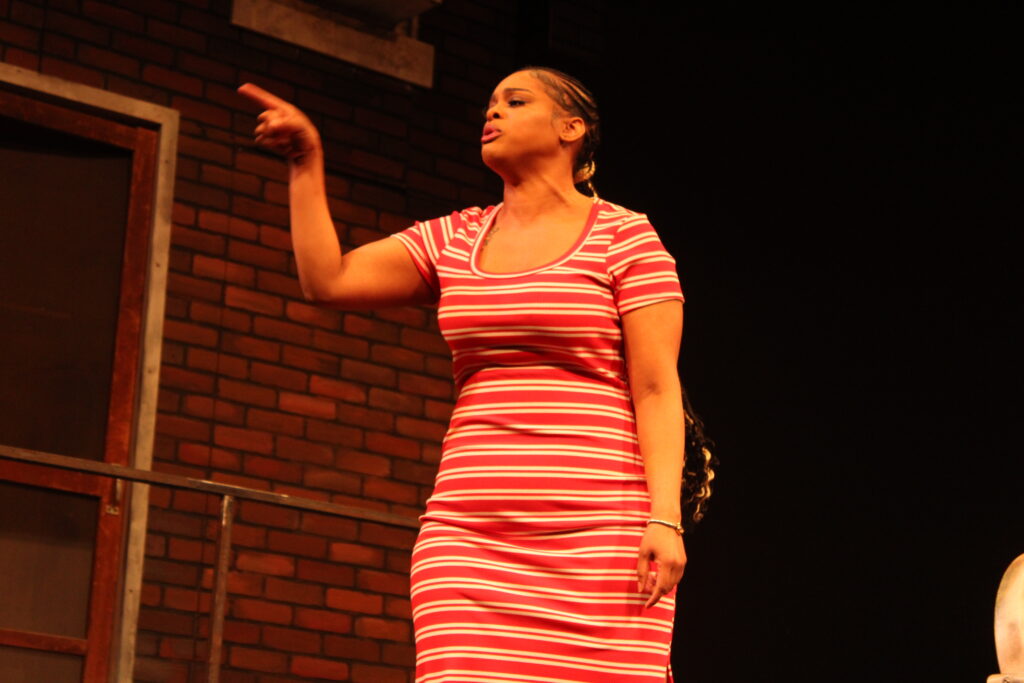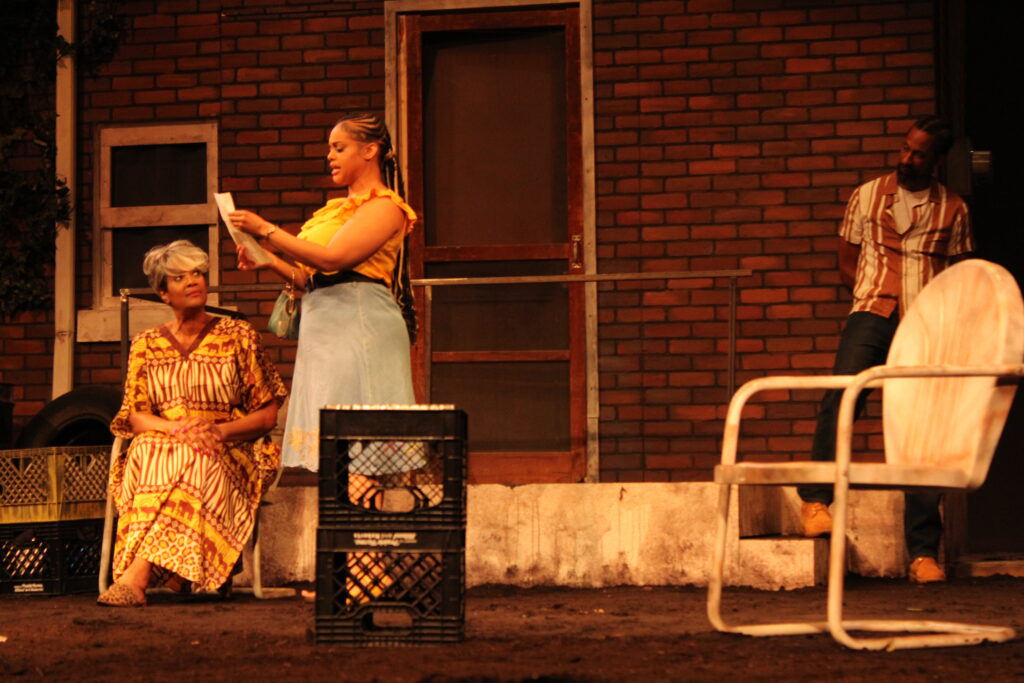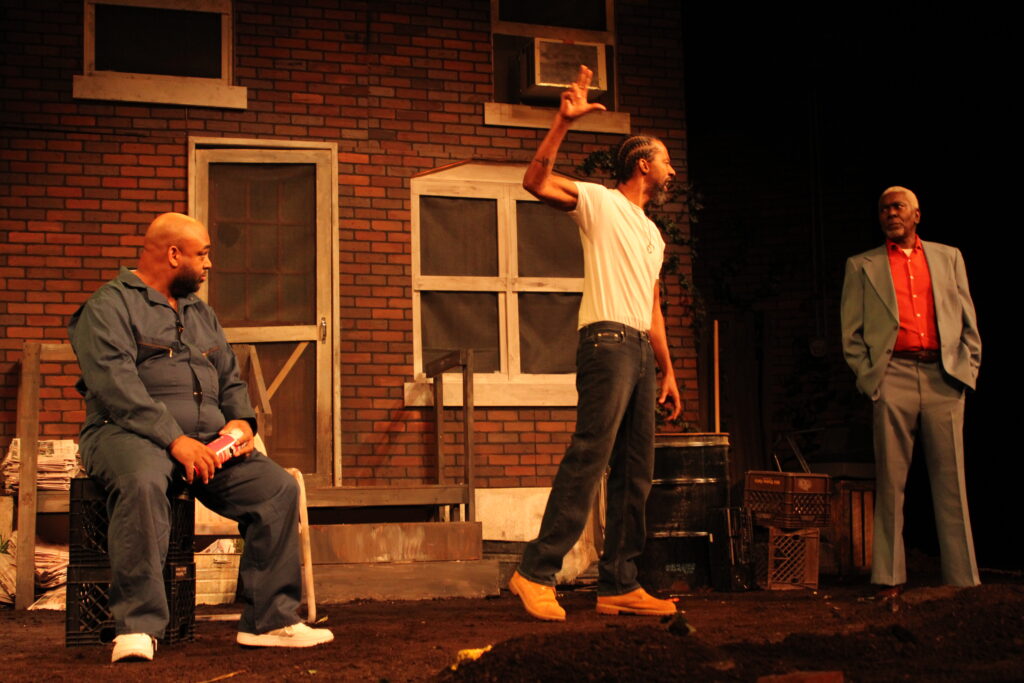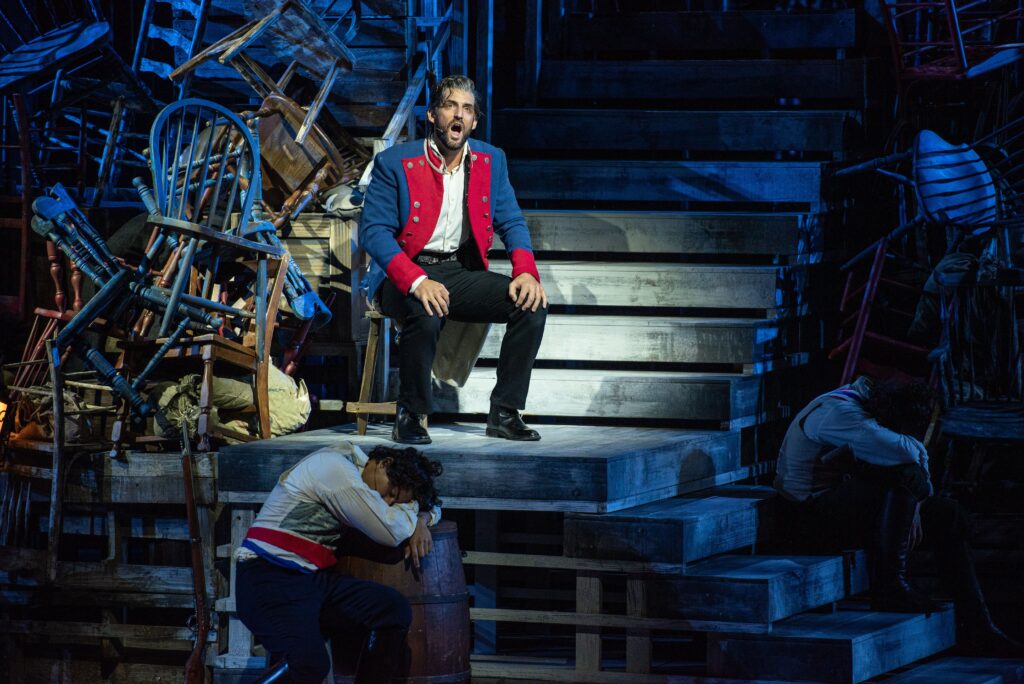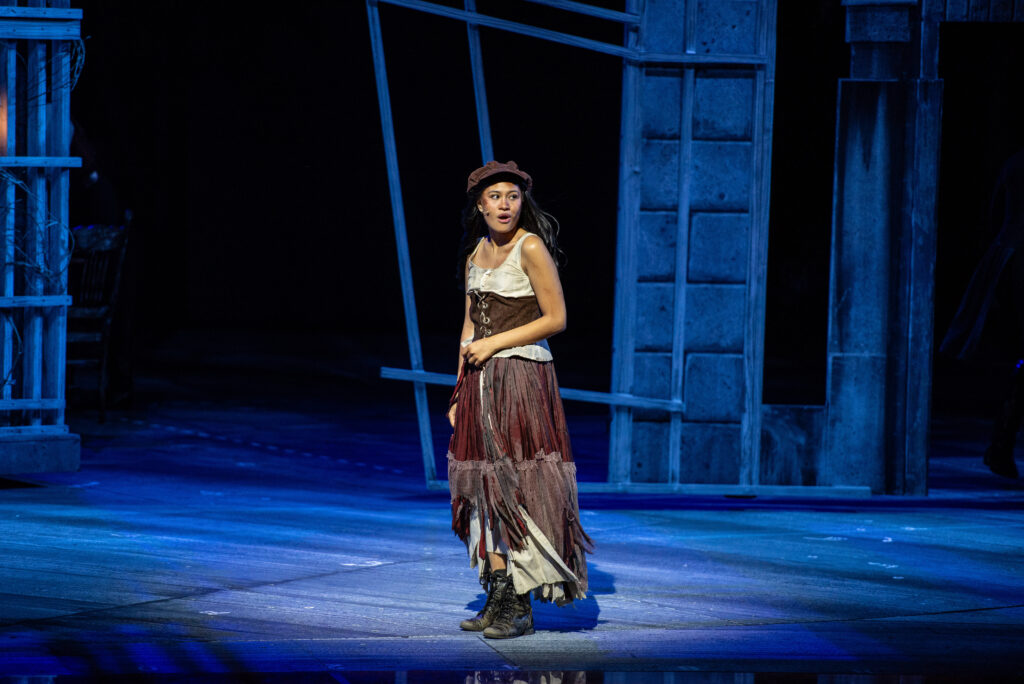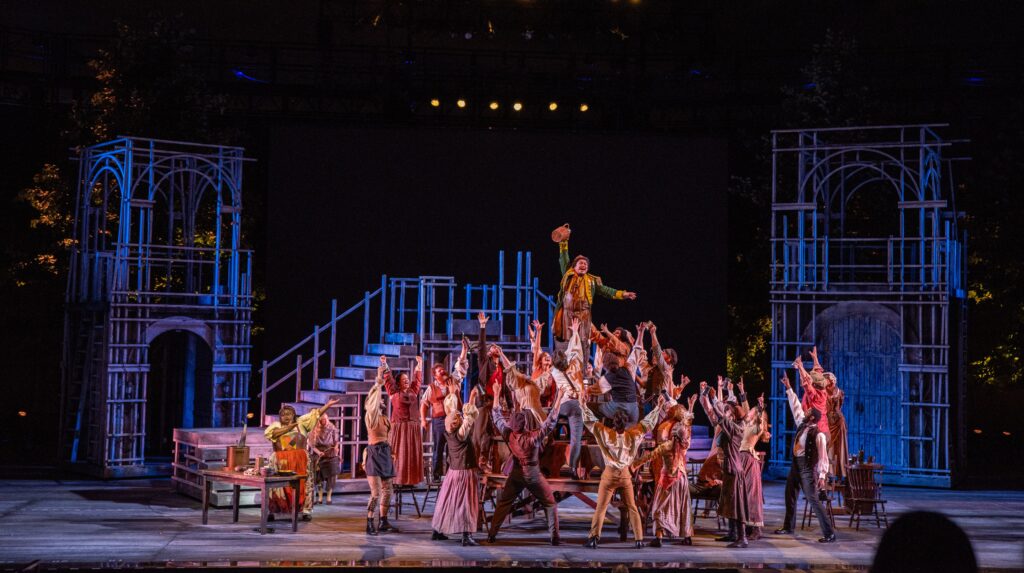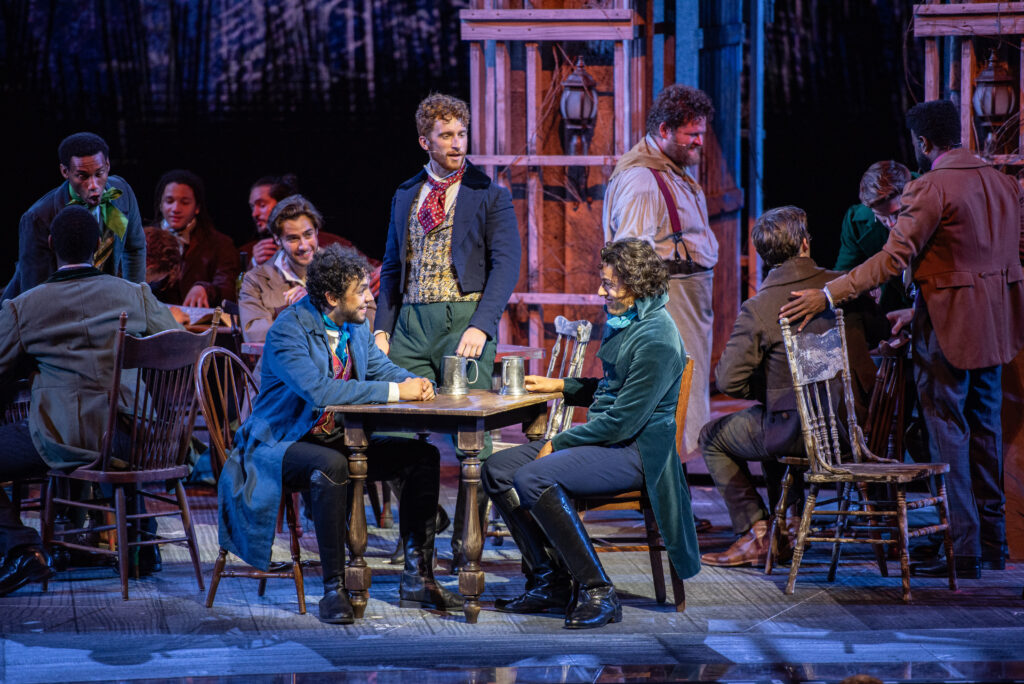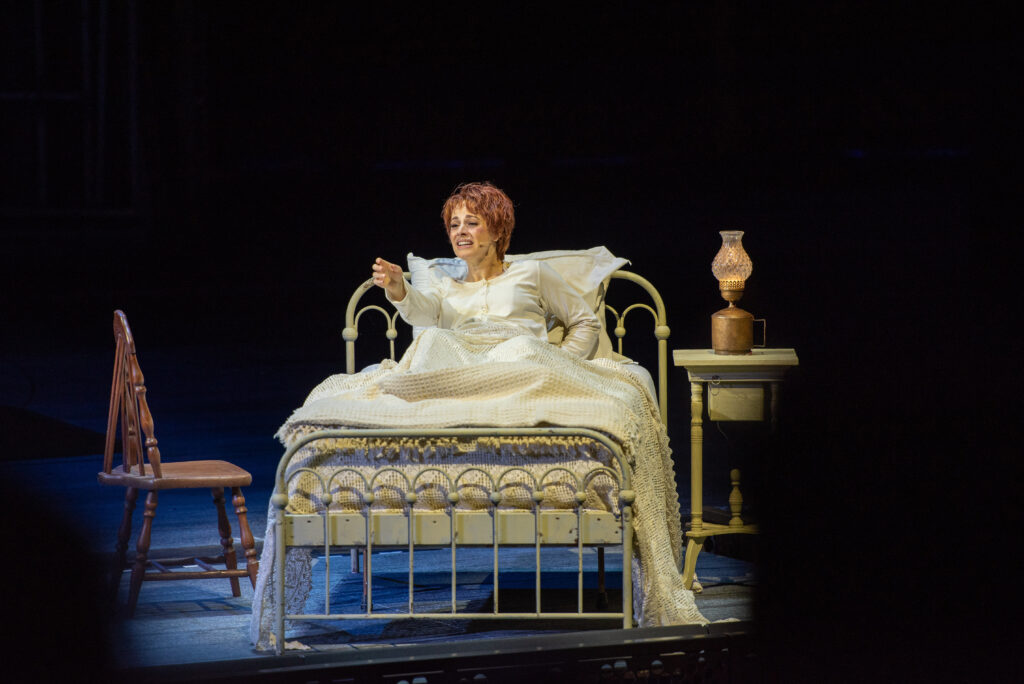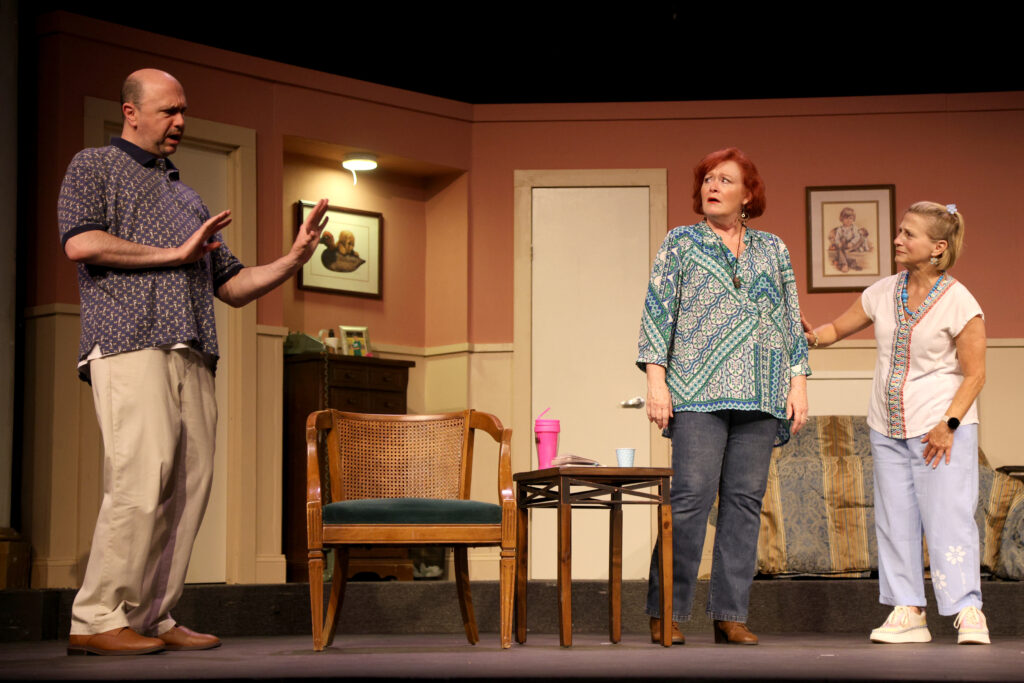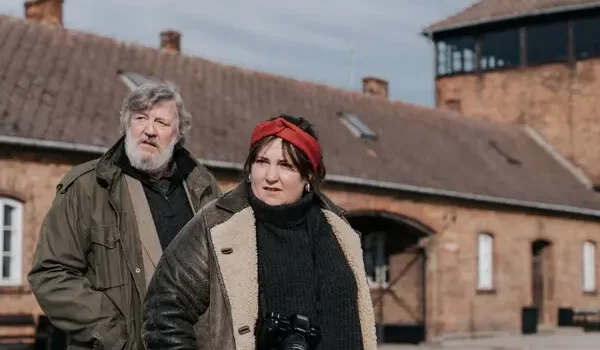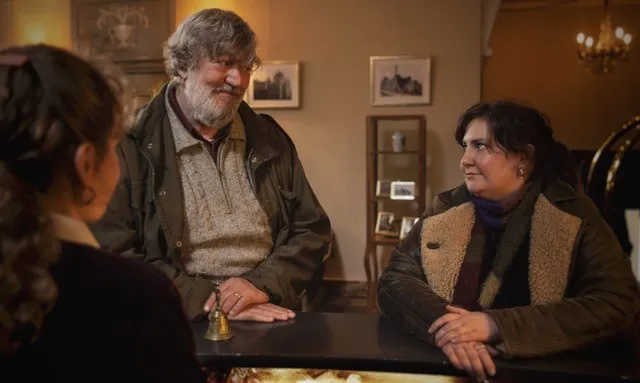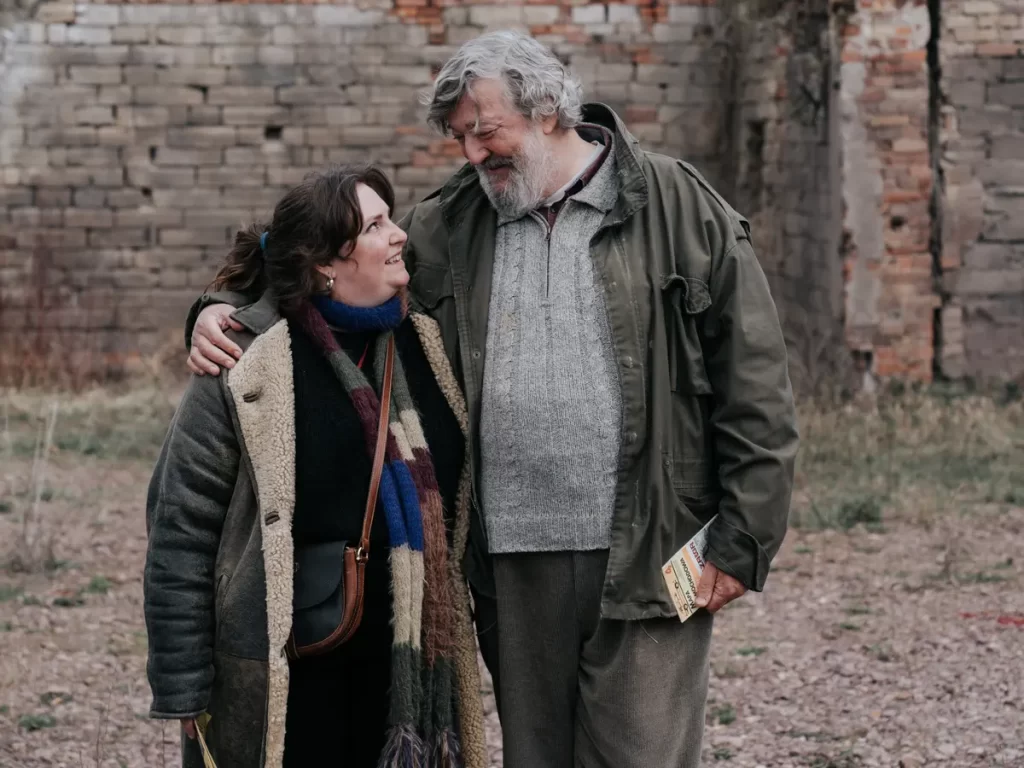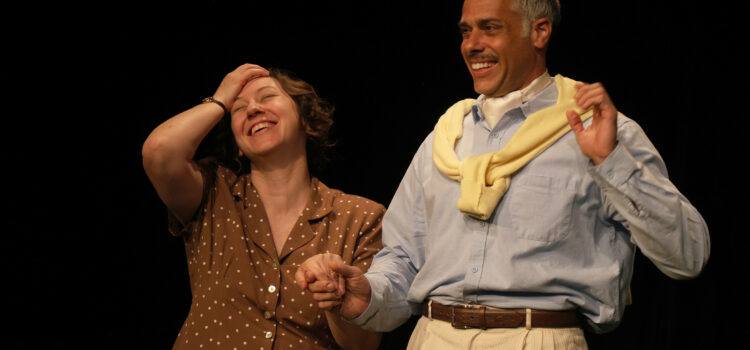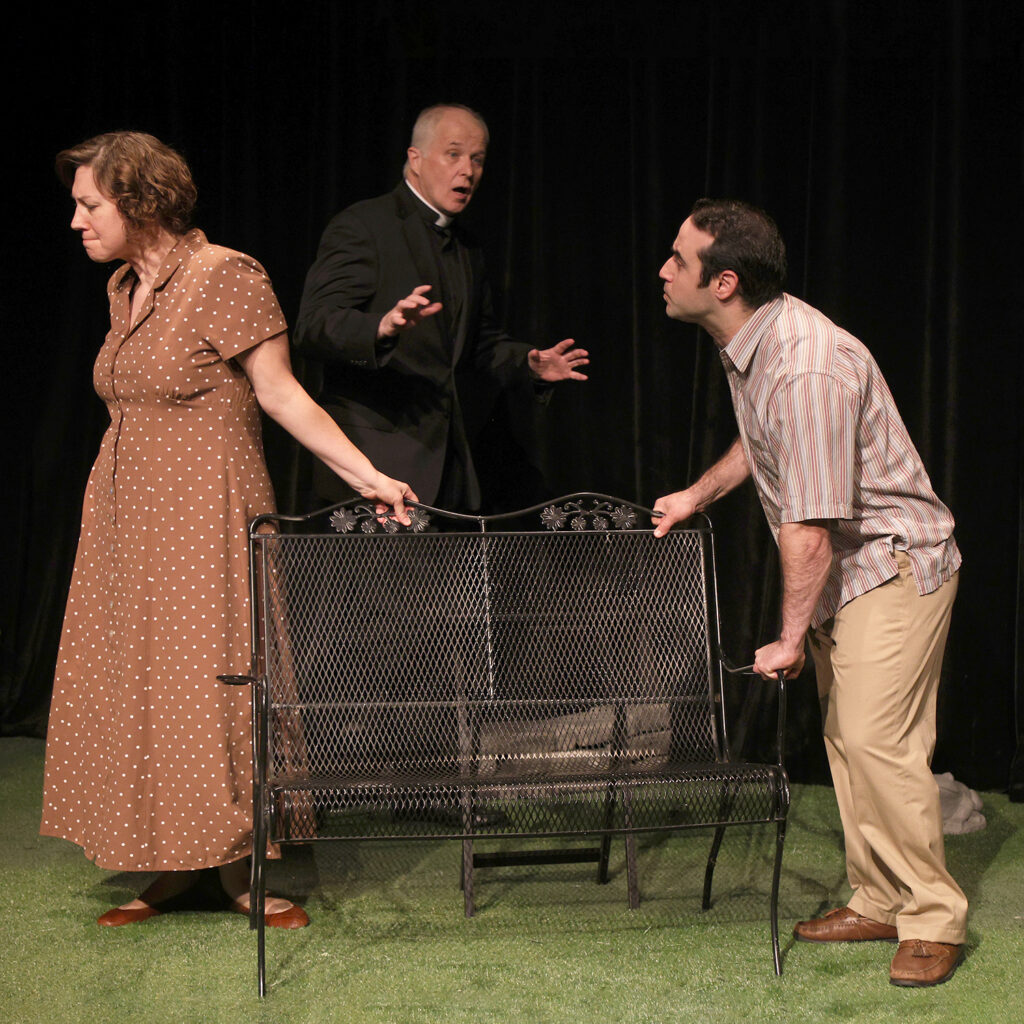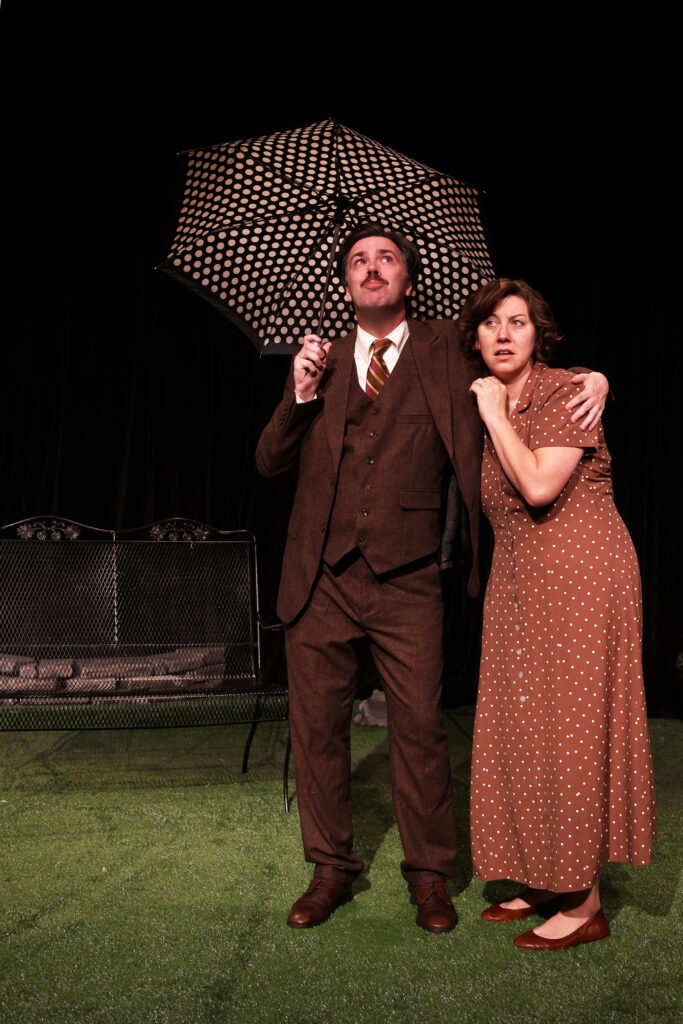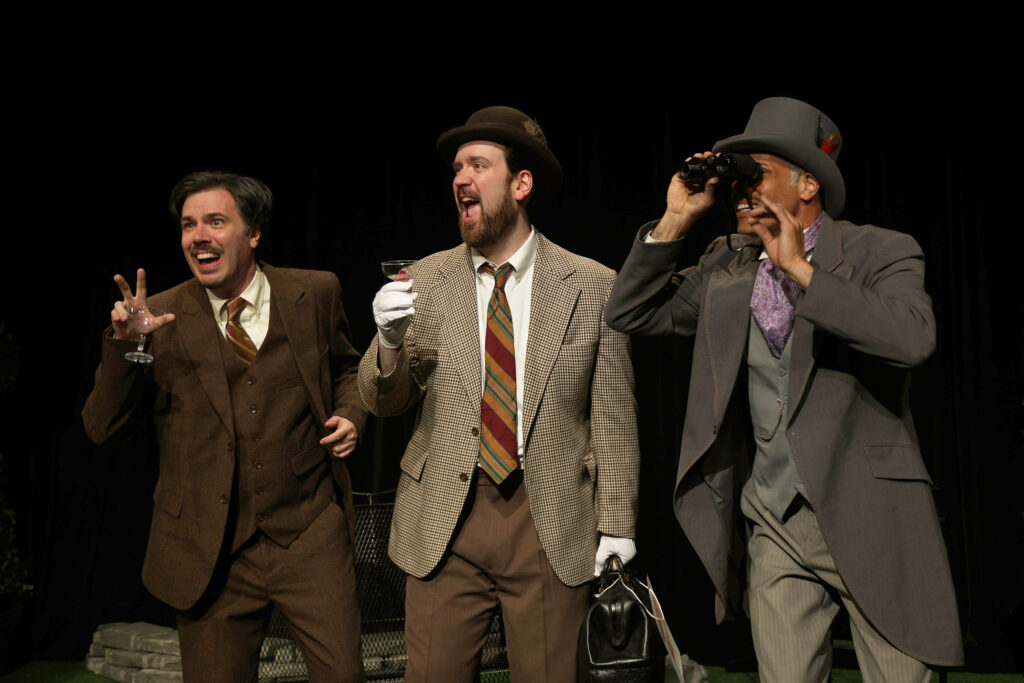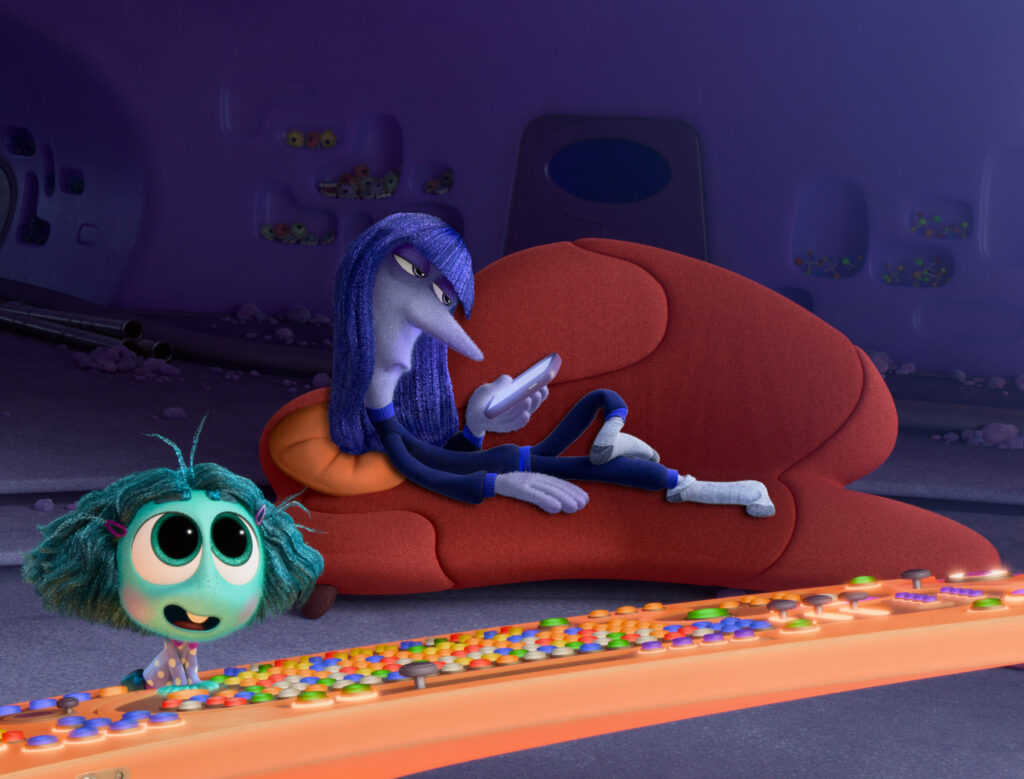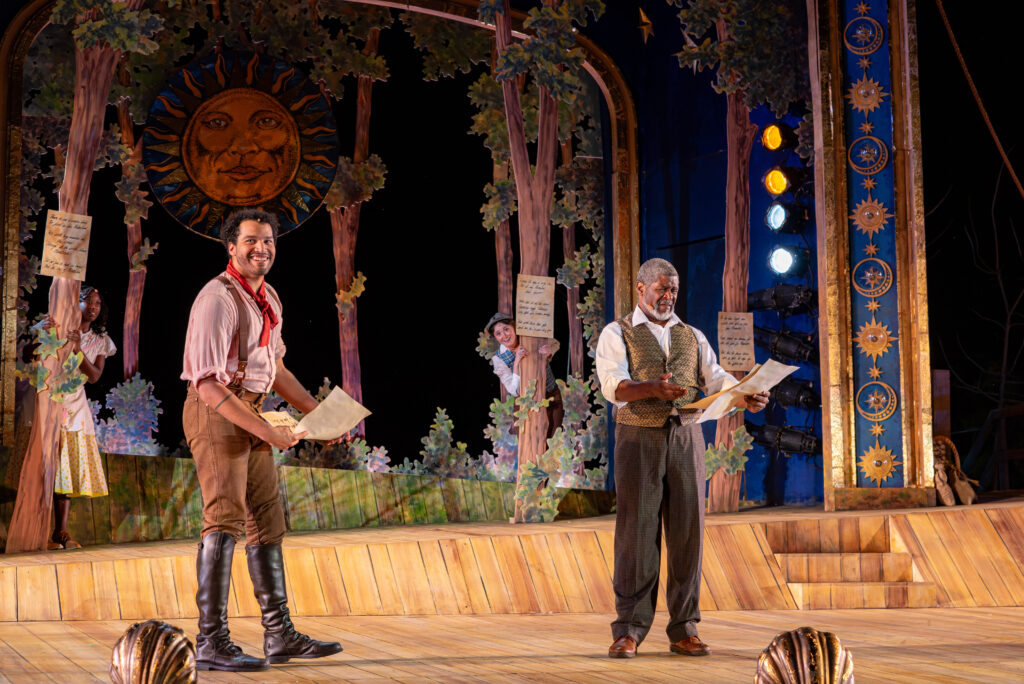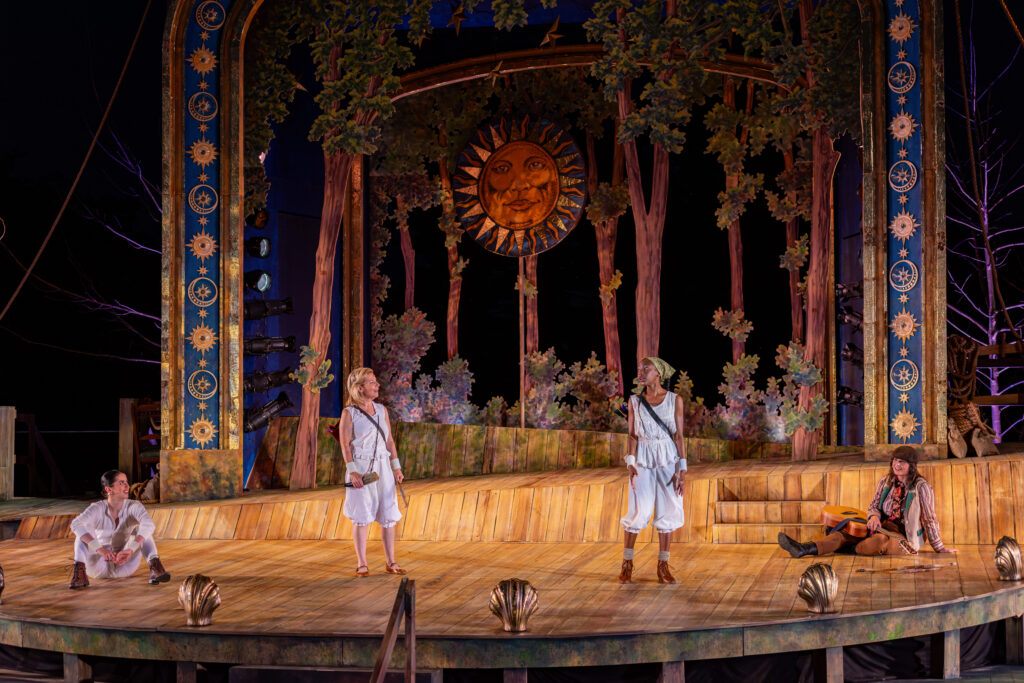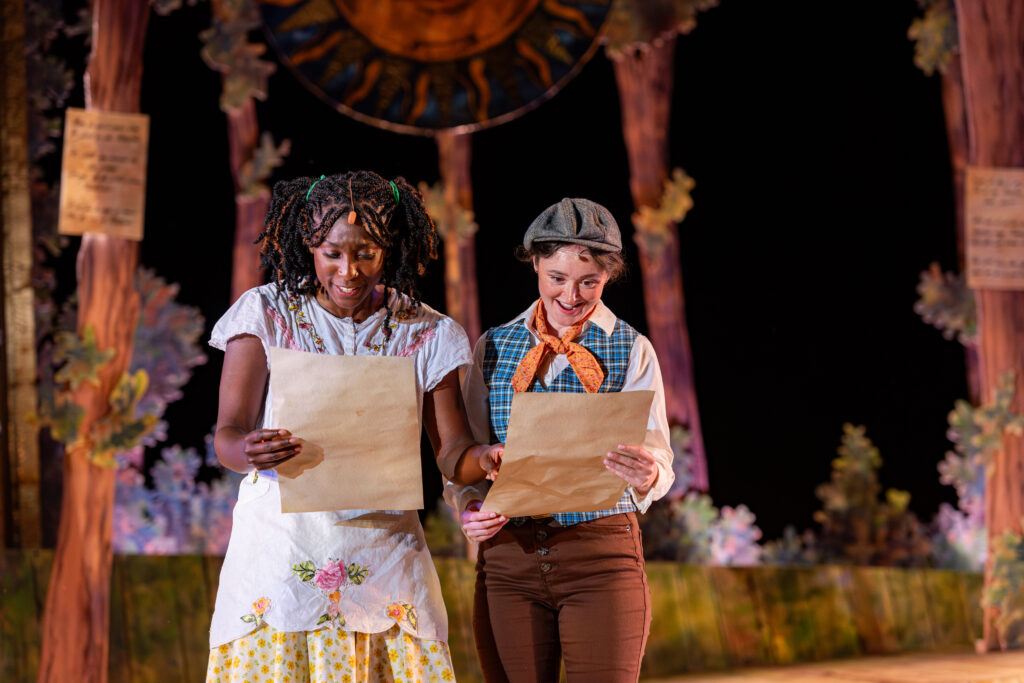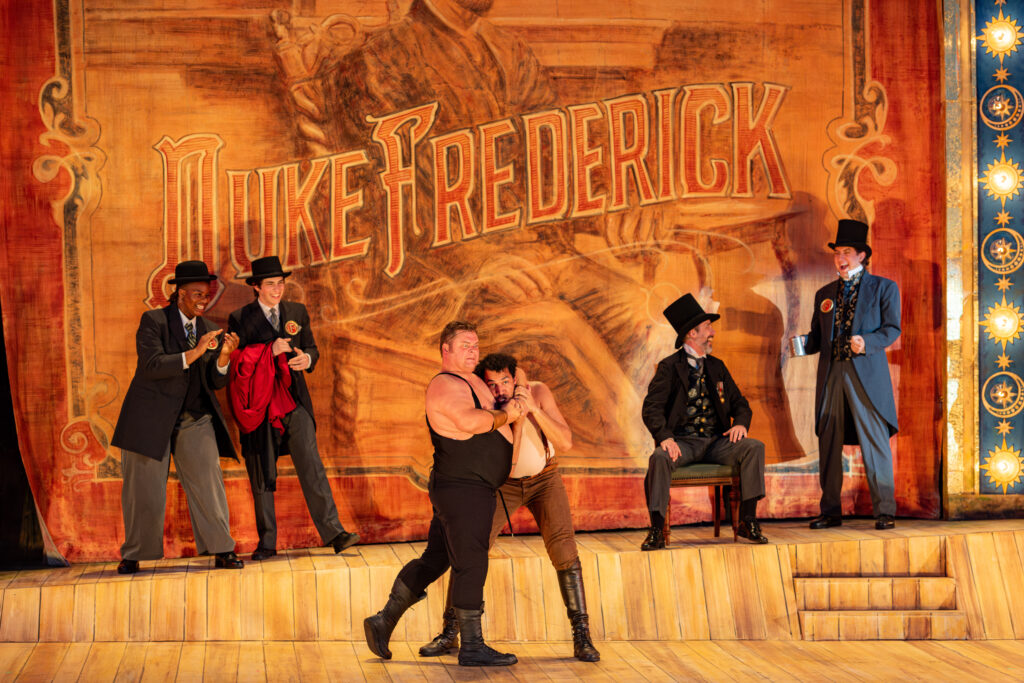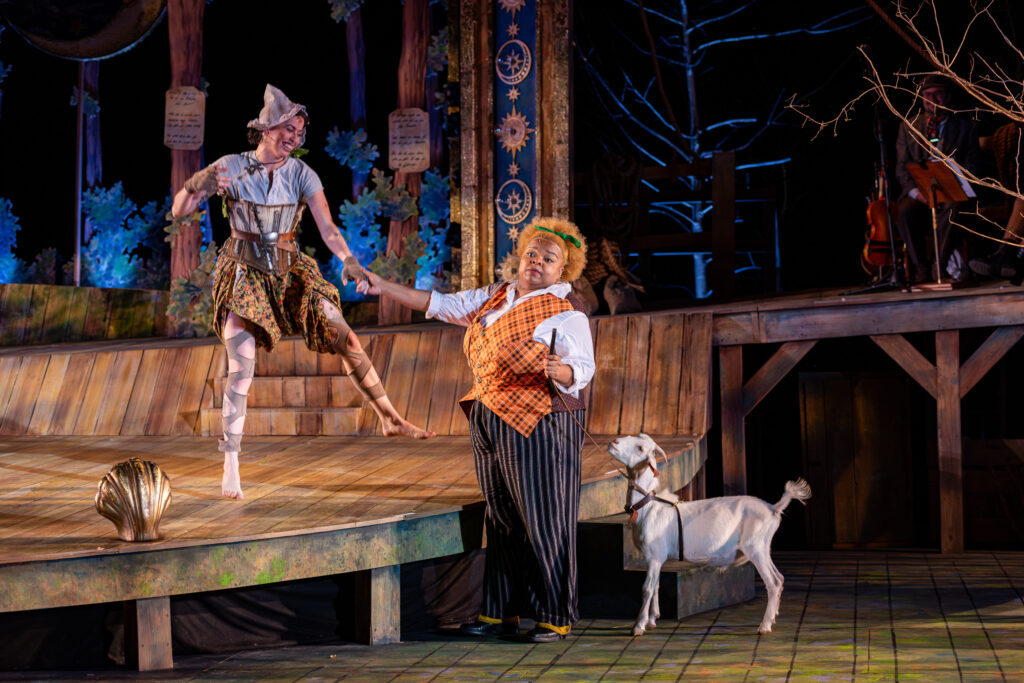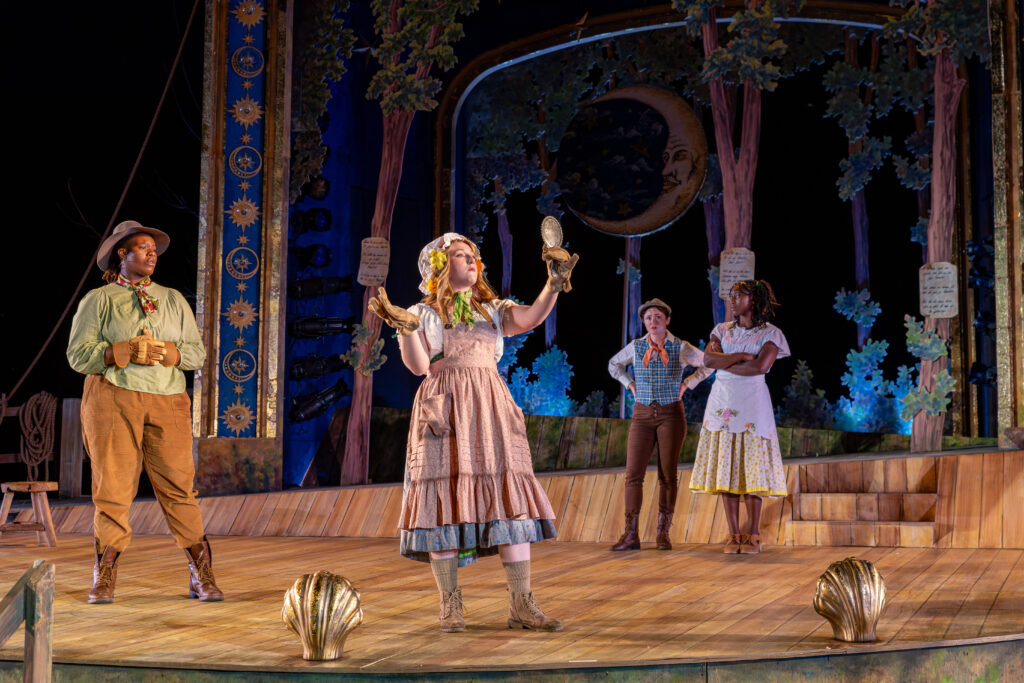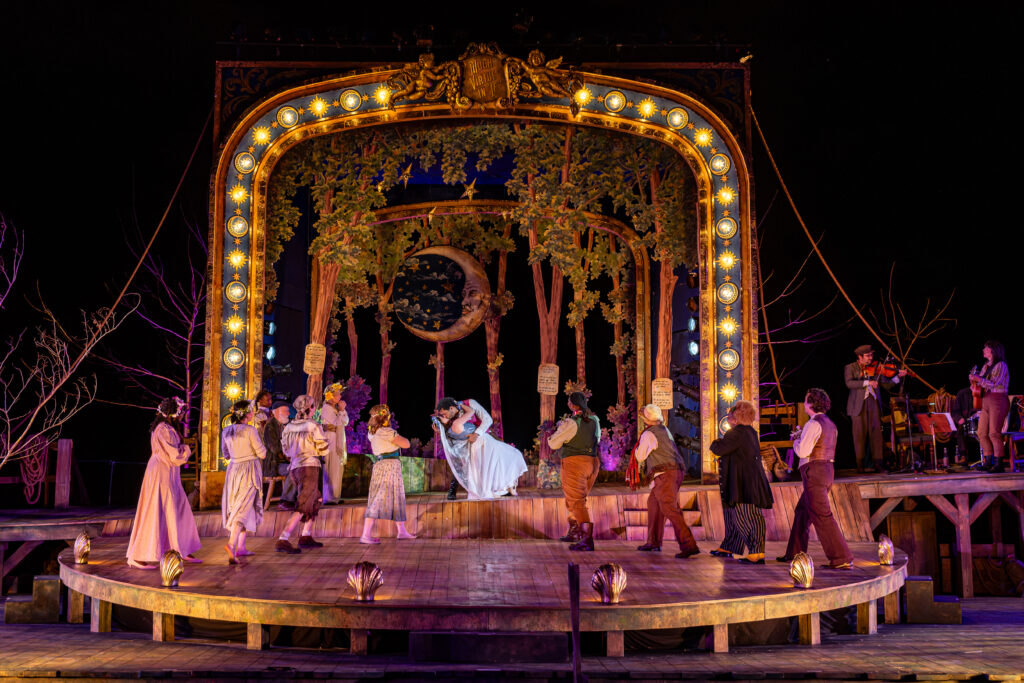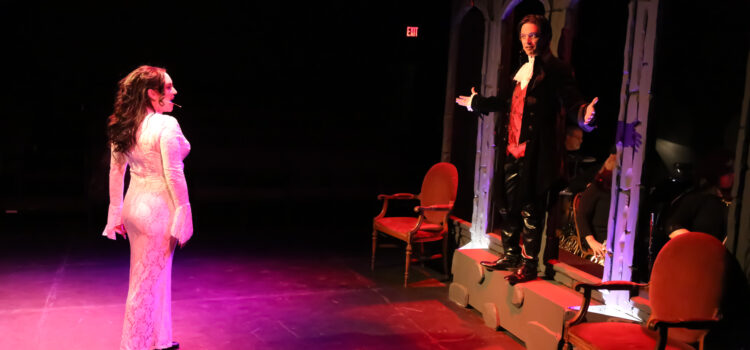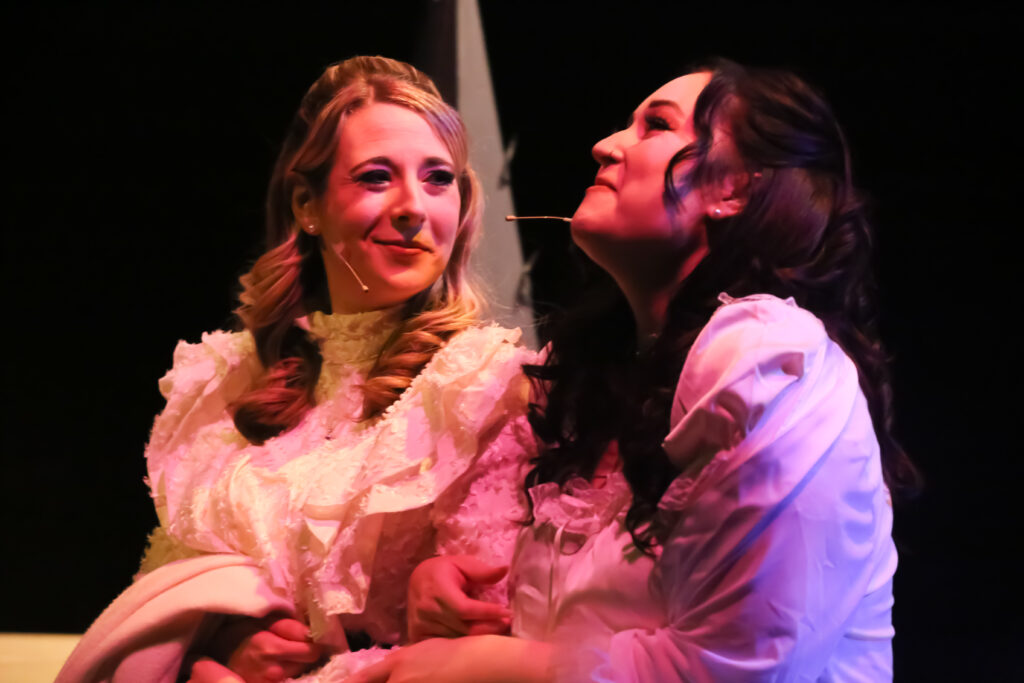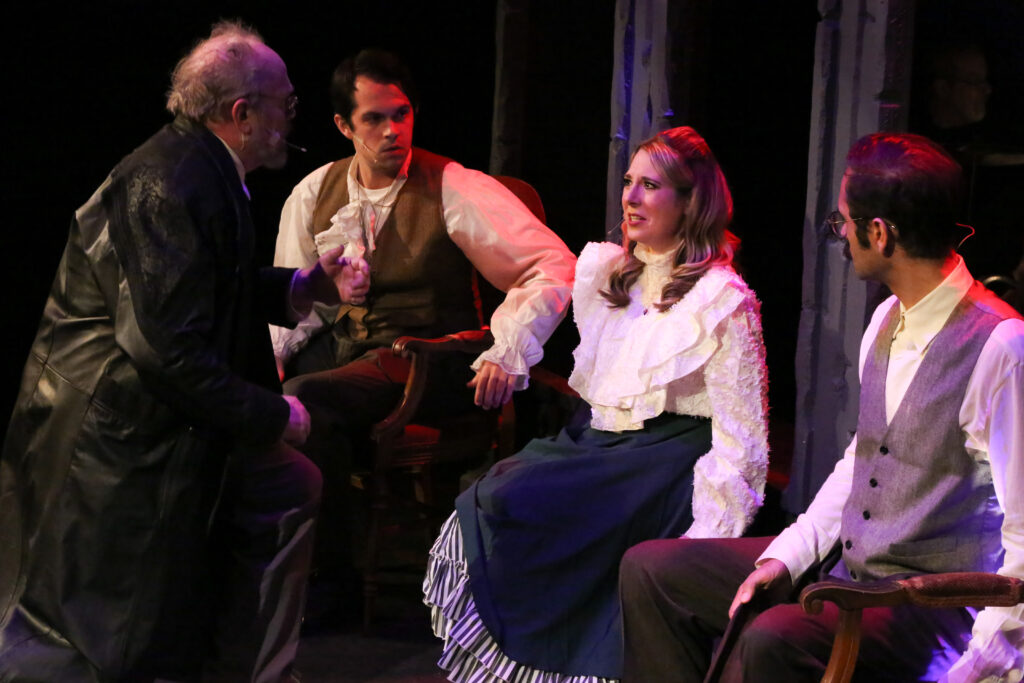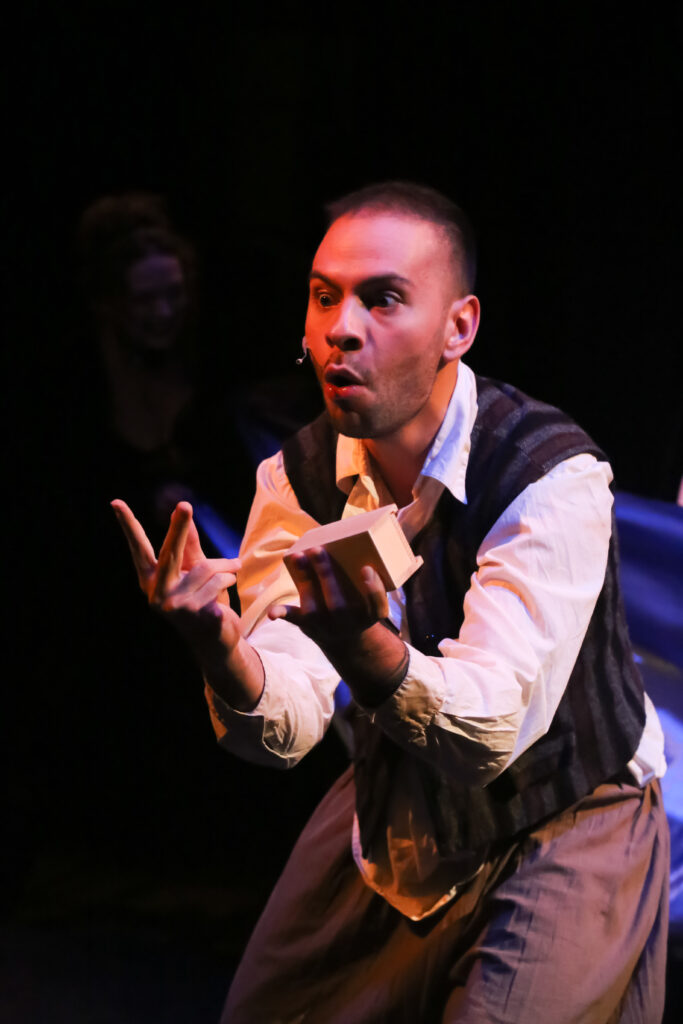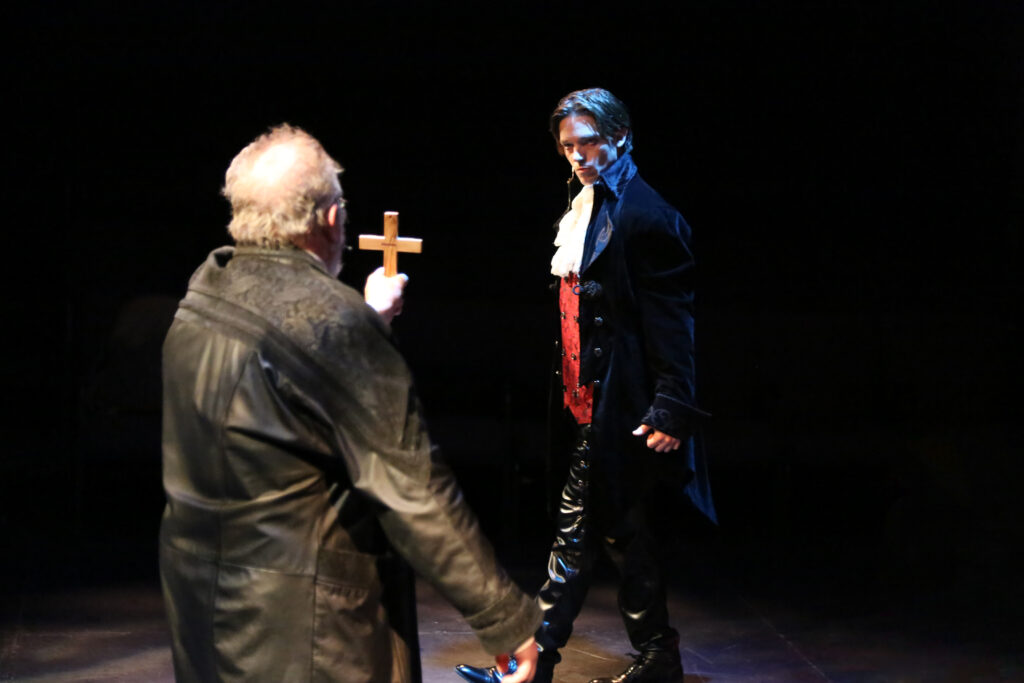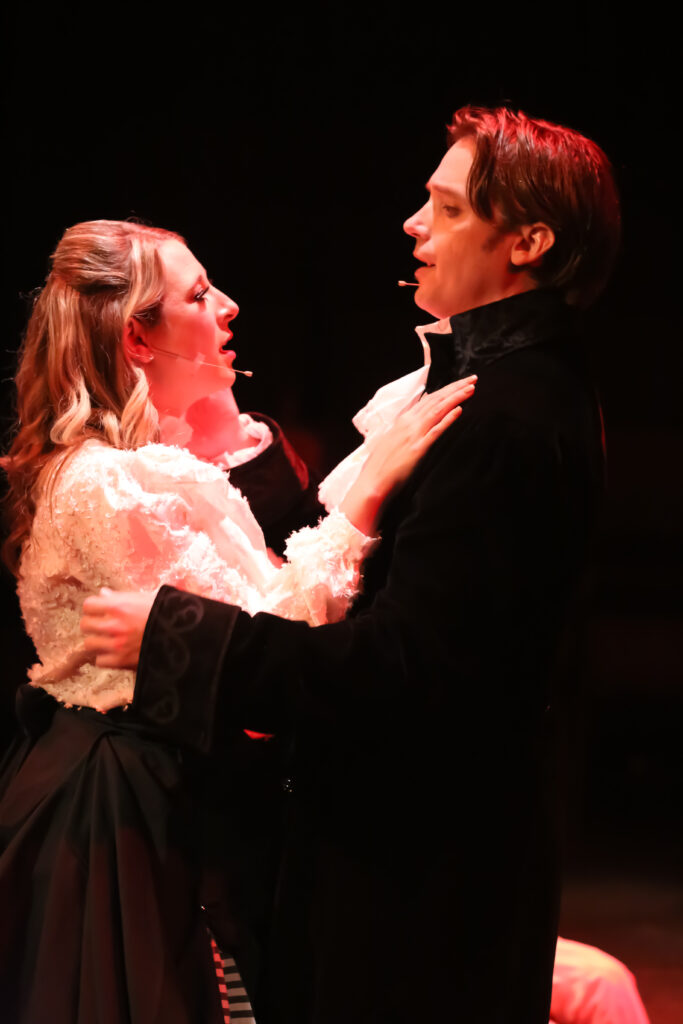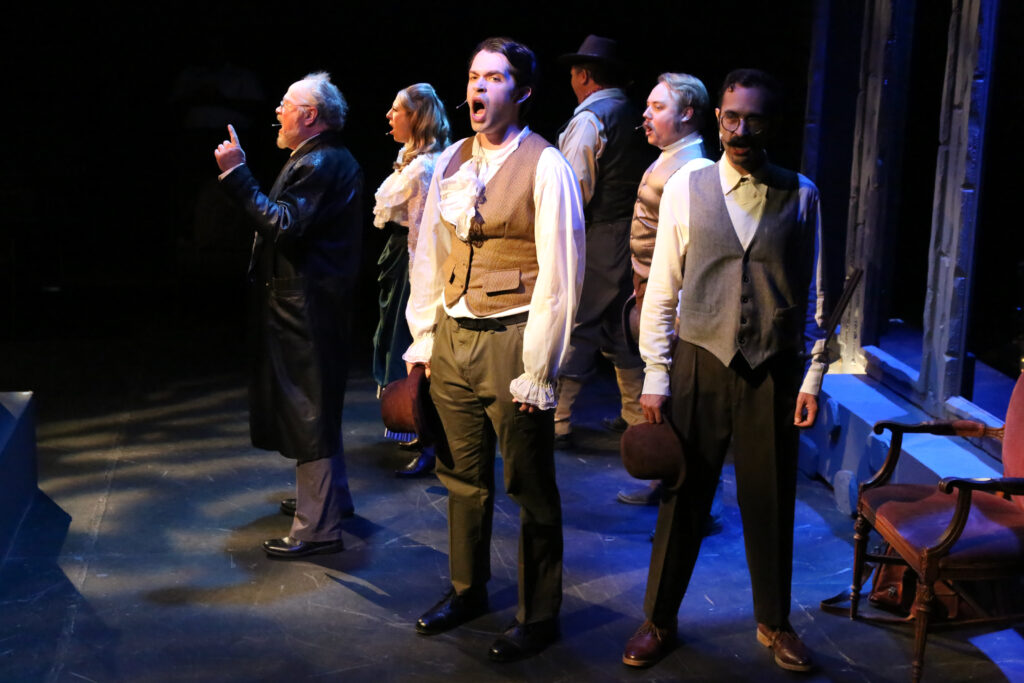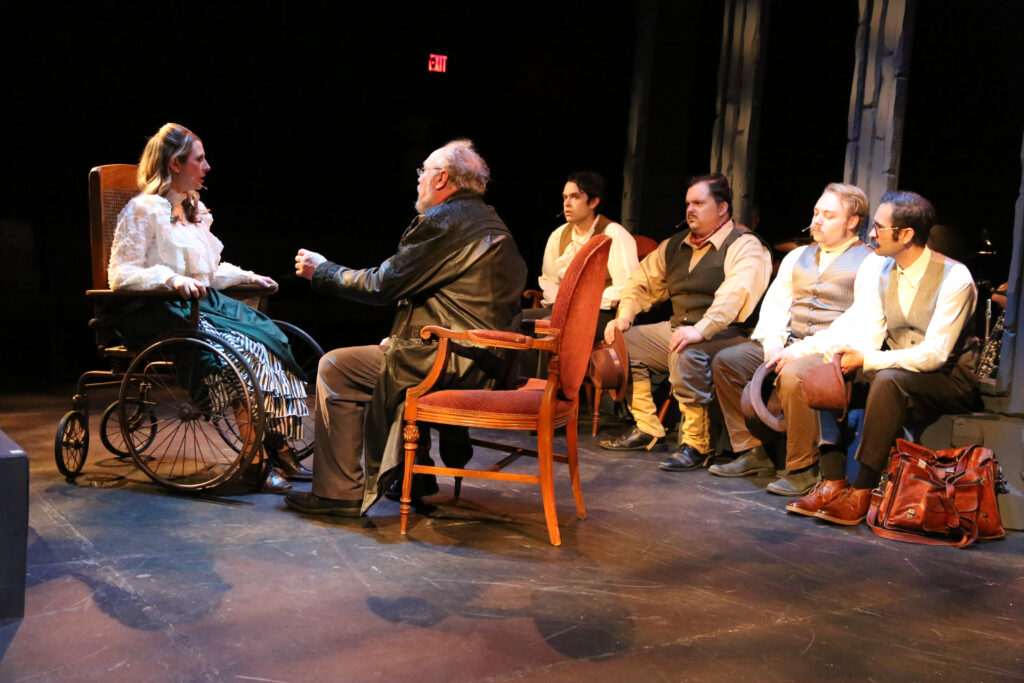By Lynn Venhaus
Let’s cut to the chase. Tiffany Mann’s electrifying rendition of the signature song, “And I Am Telling You I’m Not Going,” is everything you want it to be and more, exceeding the highest expectations.
If The Muny had a roof, she would have smashed it to smithereens. She met her Muny moment by unleashing a torrent of fury, hurt, pain and devotion with such ferocity – and control – that the only one not breathless after listening was Ms. Mann. She was stunning in her range and vocal reservoirs.
It was truly one of the most spectacular powerhouse performances in my 60 years of attending Muny shows. She received thunderous ovations throughout, with some of us leaping to our feet as we applauded at the finish.
It’s no wonder she took us to church, for she’s been doing that for a long time. Her parents are nationally renowned gospel singers and actors David and Tamela Mann. You may recall Tiffany bringing the house down in “Smokey Joe’s Café” in the Muny’s first post-pandemic show in 2021.
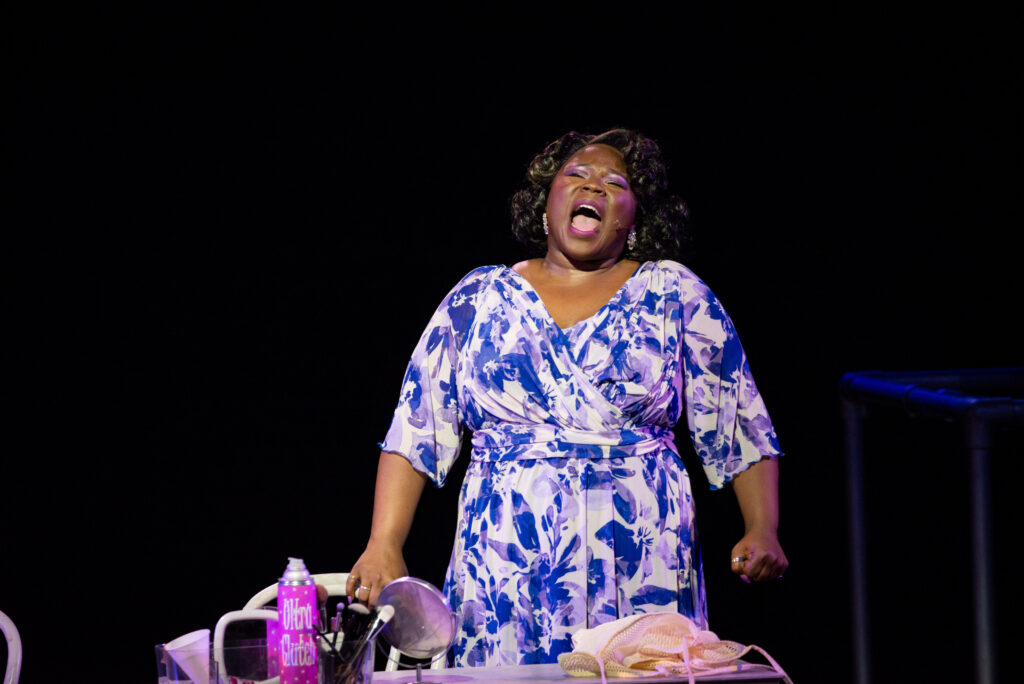
That “Dreamgirls” showstopping first act closer has been thrilling audiences since its debut in 1981 and was ranked the no. 1 rhythm-and-blues song of 1982 on the Billboard chart. It’s an intimidating one to master, even for the most gifted vocalists.
Tony winner Jennifer Holliday’s career took off after originating the role of Effie White on Broadway, winning a separate Grammy for best vocal performance, and Jennifer Hudson won an Oscar as Best Supporting Actress for the 2006 movie adaptation.
This rags-to-riches showbiz musical stands out because it delves into the complexities of gender and race at a time when pop music was going through a seismic cultural shift, with changing times and tastes.
Black singers were breaking down racial barriers with ‘crossover’ music, yet often compromised in a live music and recording business hierarchy.
These are subjects explored in such crowd-pleasing jukebox musicals as “Motown: The Musical,” “Memphis,” and “Tina – The Tina Turner Musical,” but “Dreamgirls” was among the first, marked by its style and sophistication.
The book and lyrics by Tom Eyen and music by Henry Krieger focuses on an all-girl singing group – think Diana Ross and the Supremes, the Shirelles, Martha and the Vandellas, and the Chiffons — as they rocket to superstardom in the 1960s and 1970s.
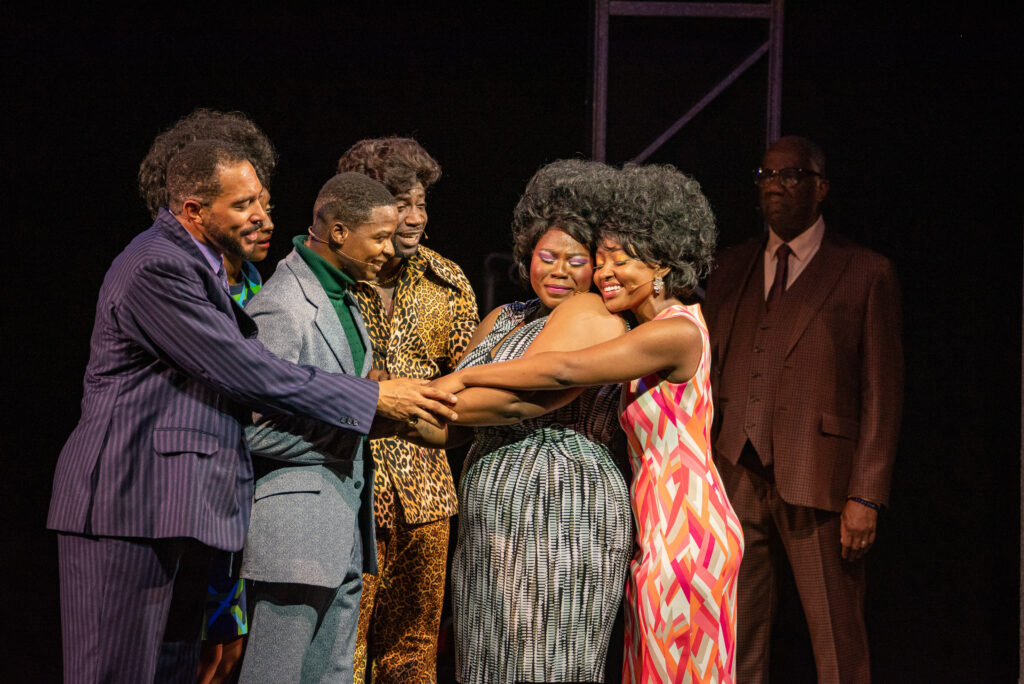
They must learn the ins and outs of a cutthroat system while not having much control over their contracts or lives. The soul sounds recall the Motown music trajectory of 1962-1976 in a peppy upbeat score, with meaningful emotional ballads to reflect character transitions.
It’s the kind of big splashy production that lends itself well to the glitz and glamour that the Muny can dazzle us with – and the creative team worked its customary magic to generate.
The look is super-sleek, with chic fashions from indomitable costume designer Leon Dobkowski, trendy wig designs from master stylist Kelley Jordan, ritzy set designs from ever-sharp Edward E. Haynes Jr., and perceptive bygone era video design from clever Elaine J. McCarthy.
Now in his 12th season, lighting designer extraordinaire Rob Denton enhances the in-vogue parade of fashions, glittery nightclub settings and mod TV appearances.
In 2012, the Muny staged a robust production featuring Holliday as Effie – and future “Hamilton” star Christopher Jackson as unscrupulous manager Curtis Taylor Jr.
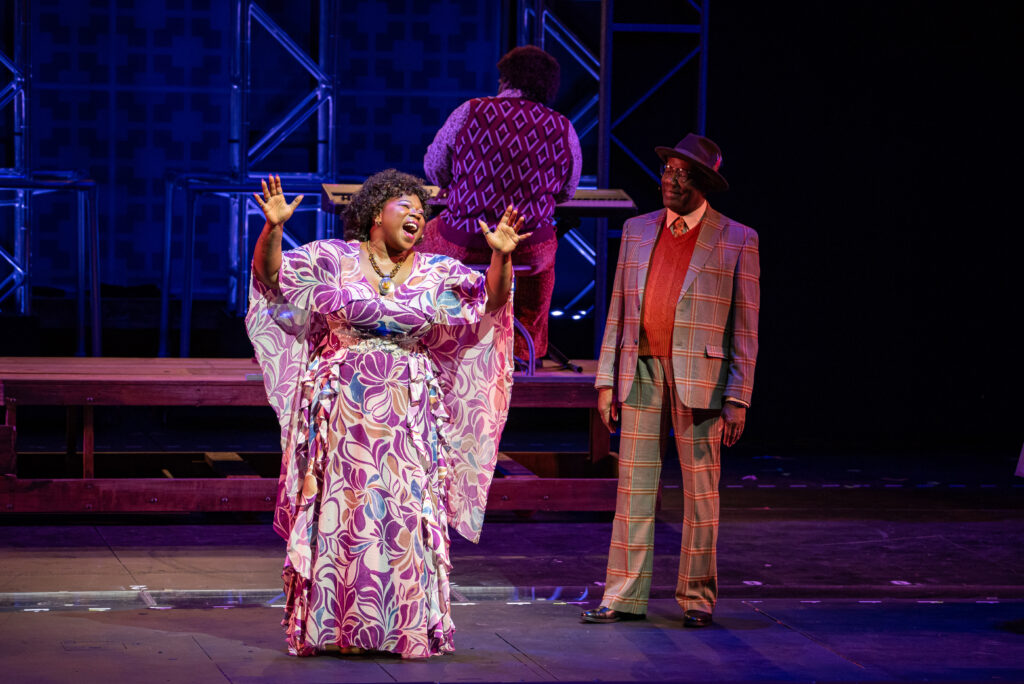
In this dynamic reprise, Mann makes Effie her own – and the high-spirited ensemble comes together seamlessly as a family along to an effervescent pulsating rhythm.
The principal characters are an impressive gathering of seasoned pros who’ve made a name for themselves on Broadway.
Immensely likable performers Aisha Jackson is classy Deena Jones and Courtnee Carter is flashy Lorrell Robinson, with the later addition of Effie’s replacement, Natalie Kaye Clater as charming Michelle Morris. They bring a lot of sparkle and pizzazz to the ambitious and naïve rising trio The Dreamettes.
They beautifully blend harmonies, and you root for them and their big dreams. Making their Muny debuts, Jackson was the first black woman to play the role of Anna in the Broadway production of “Frozen” and Carter was recently in the Tony-winning revival of “Parade.”
And the male leads are equally strong – silky-smooth Charl Brown is again impressive as the ethically challenged Curtis Taylor Jr., the Svengali manager-producer, after his memorable turn in the aforementioned “Smokey Joe’s Café” the summer of 2021. He was Tony nominated as pioneering Smokey Robinson in “Motown: The Musical.”

With the theatricality and bluster of James Brown and Little Richard, Nick Rashad Burroughs is on fire as live-wire star Jimmy “Thunder” Early. He quickly won over the audience with his brash charm and high energy.
Burroughs originated the role of Ike Turner in “Tina – The Tina Turner Musical” on Broadway and was recently seen as Henri de Toulouse-Lautrec in the touring production of “Moulin Rouge” that came to the Fox this spring.
Aramie Payton is warm and personable as the talented songwriter C.C. White, Effie’s brother. He was the original Michael Jackson standby in “MJ – The Musical.”
Local treasure Ron Himes is a formidable Marty, an early mover and shaker who helps the group navigate the biz and tries to keep Curtis in check.
They are a tight-knit unit gliding through the ups and downs of fame.
Director Robert Clater makes sure we feel the heart along with the soul as a whirlwind rise marks Act One. His vivacious staging of the Apollo Amateur Night line-up opening and a supercool “Steppin’ to the Bad Side” gets us off to a rousing start.
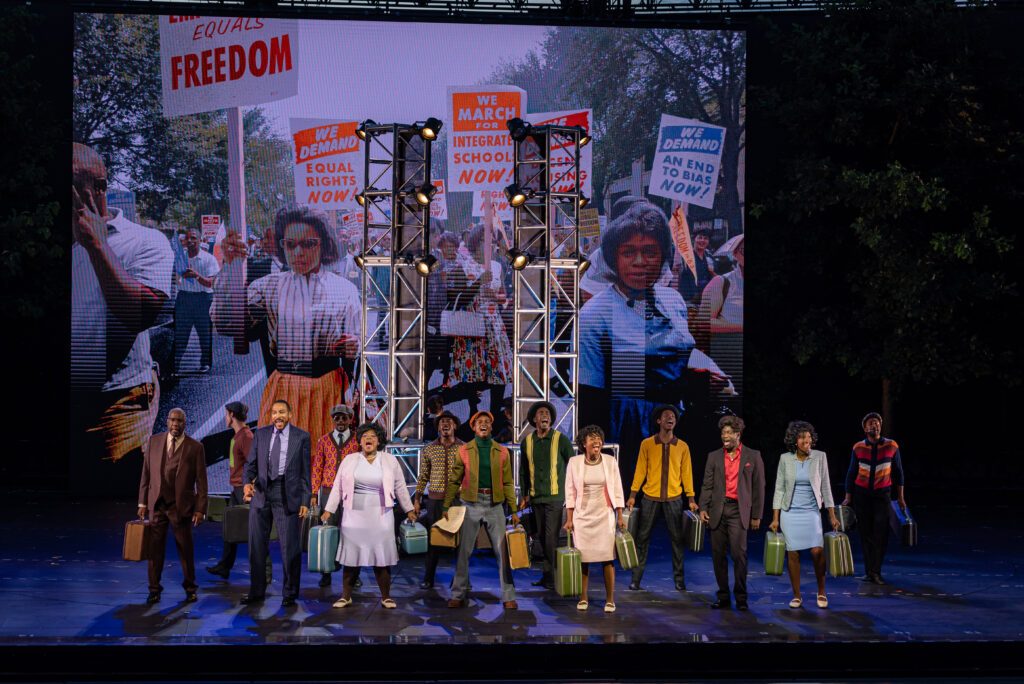
The momentum keeps going with “Dreamgirls” and “Party Party,” followed by the serious “Heavy” and that soul-stirring rafter-shaking hit song.
Highlights also include the ironic white milquetoast rendition of “Cadillac Car” by Dave and the Sweethearts – really hammering a serious point with humor – and one of the most poignant numbers, “Family.” That is the enduring theme that ultimately saves some of them from themselves.
Choreographer Lesia Kaye keeps the dancers moving while music director/conductor Anne Shuttlesworth ensures everybody’s grooving, although I did feel at times the orchestra overpowered the vocals..
The late great legend Michael Bennett, fresh from the phenomenon that was “A Chorus Line,” directed and choreographed the original “Dreamgirls” 43 years ago, and Kaye honors that legacy with vigor.
Because of the heady mix of achieving their dreams in Act One, there is a believable joy throughout – until Effie’s heartbreaking personal and professional betrayal, although her erratic unprofessionalism and off-putting diva behavior precipitates her inevitable downfall.

The cool and refined Deena becomes the more ‘presentable’ leader of the group, now known as Deena Jones and the Dreams, and is everything hot-headed Effie lacks, so Act Two interjects more of the pitfalls of fame and personal strife as fortunes run high and low.
While the cliched backstage drama also features Effie’s redemption, karma for Curtis, and Jimmy’s career tumbles, the girls’ can’t stop the detrimental cracks in their upward direction.
The consequences of single-minded success are obvious, and the book isn’t as strong in this snapshot, and the pacing sags midway.. You can see the strain of having everything tied up neatly on the page, yet the resolution feels earned for the principals, if rushed..
“And I Am Telling You…” isn’t Mann’s only slam dunk, for her contrite “I Am Changing” and her pensive “One Night Only” soar.
And darn if that long-time-coming reunion doesn’t produce a lump in the throat!
Among noteworthy elements to emphasize, Dobkowski’s elegant interpretations of retro fashions deserve their own standing ovation. His work always suits the characters perfectly, and he’s won two St. Louis Theater Circle Awards, for “Seussical” and “The Wiz.” He is in his 11th season, and brings out a shiny, happy vibe to everything he produces. Remember his jubilant “Sister Act” from last season?
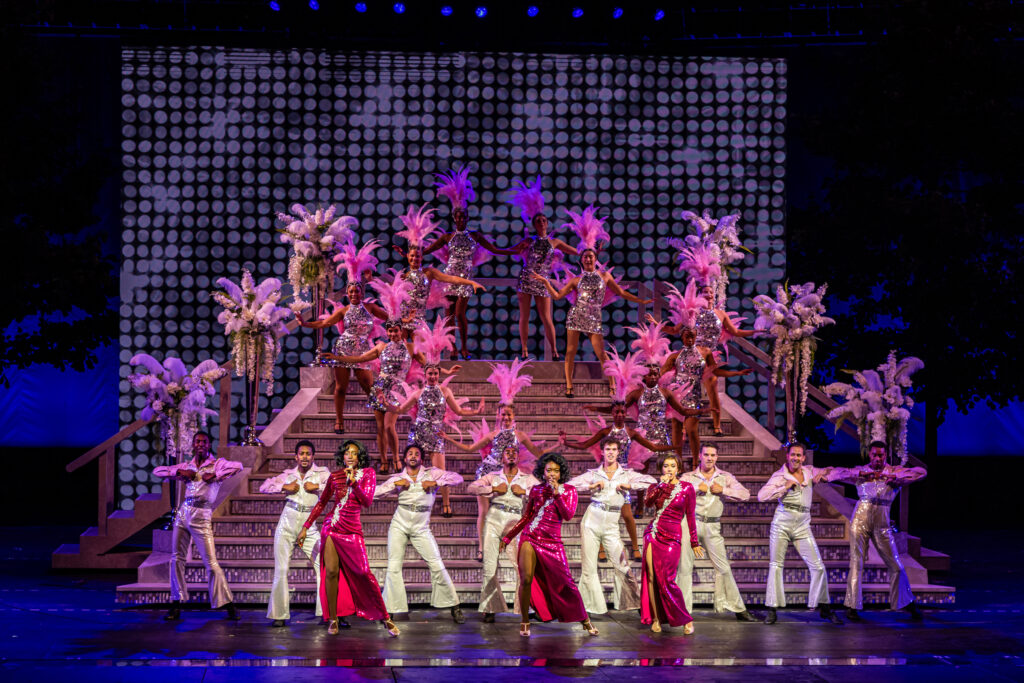
And Haynes’ scenic design is so fluid, one must salute his depth – briskly moving scenes in Chicago, Detroit, St. Louis, Miami, Las Vegas, and other cities with remarkable dexterity. Theater Circle winner for “Smokey Joe’s Café,” he created the landmark set for last season’s “Chess.”
One doesn’t achieve this slick sense of time and place with its distinctive sound and fury without prioritizing collaboration. That is what sets this show apart from a typical “Behind the Music” documentary, with a cast and crew determined to razzle dazzle us in a most exuberant triumph.
Come for THE SONG, stay for the teamwork.
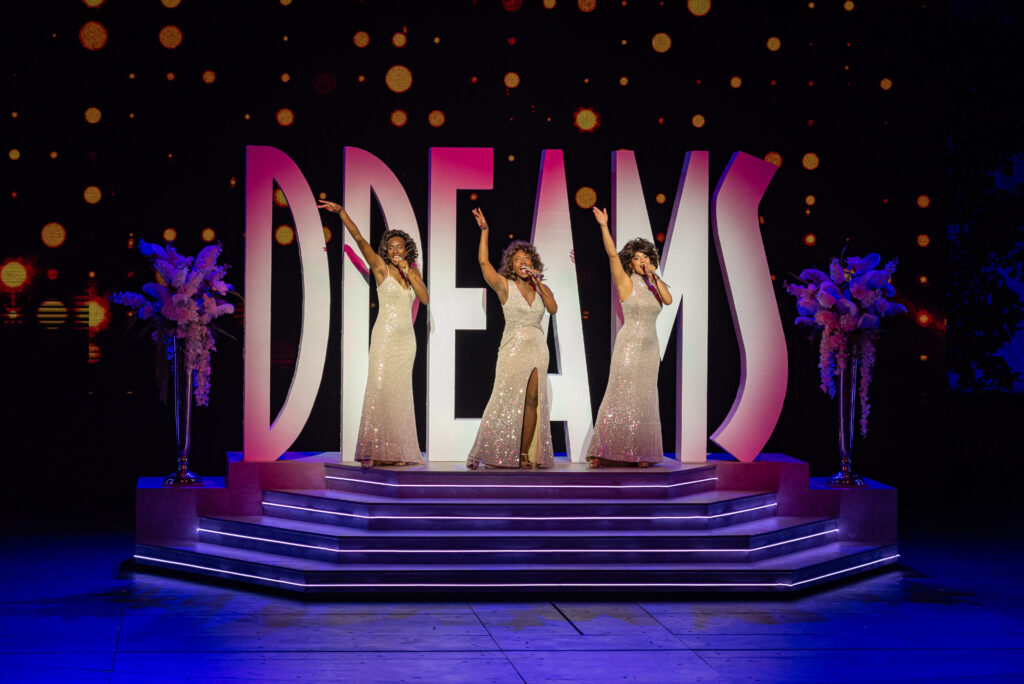
The Muny presents “Dreamgirls” at 8:15 p.m. nightly June 27 – July 3 on the outdoor stage in Forest Park. The run time is nearly 2 hours and 30 minutes, including intermission. Tickets are available at muny.org, by calling MetroTix at (314) 534-1111 or in person at the Muny Box Office, 9 a.m.-9 p.m. daily.

Lynn (Zipfel) Venhaus has had a continuous byline in St. Louis metro region publications since 1978. She writes features and news for Belleville News-Democrat and contributes to St. Louis magazine and other publications.
She is a Rotten Tomatoes-approved film critic, currently reviews films for Webster-Kirkwood Times and KTRS Radio, covers entertainment for PopLifeSTL.com and co-hosts podcast PopLifeSTL.com…Presents.
She is a member of Critics Choice Association, where she serves on the women’s and marketing committees; Alliance of Women Film Journalists; and on the board of the St. Louis Film Critics Association. She is a founding and board member of the St. Louis Theater Circle.
She is retired from teaching journalism/media as an adjunct college instructor.

